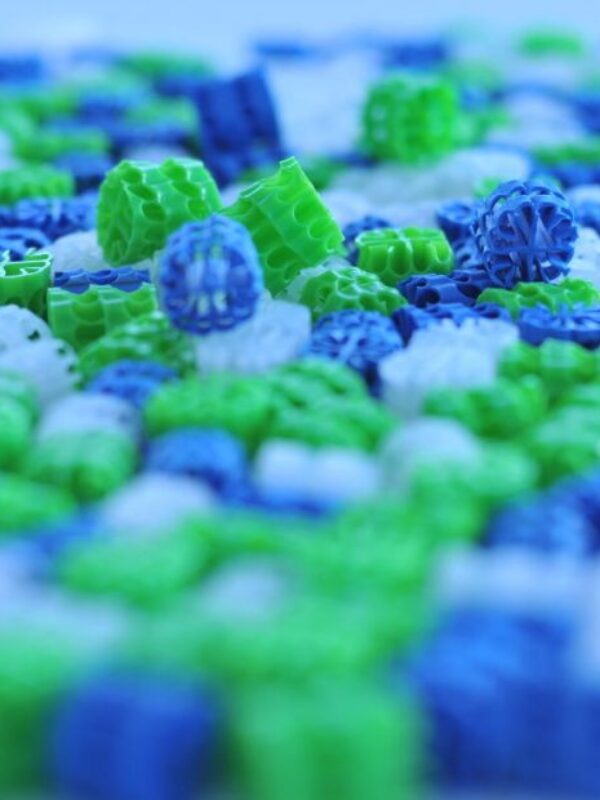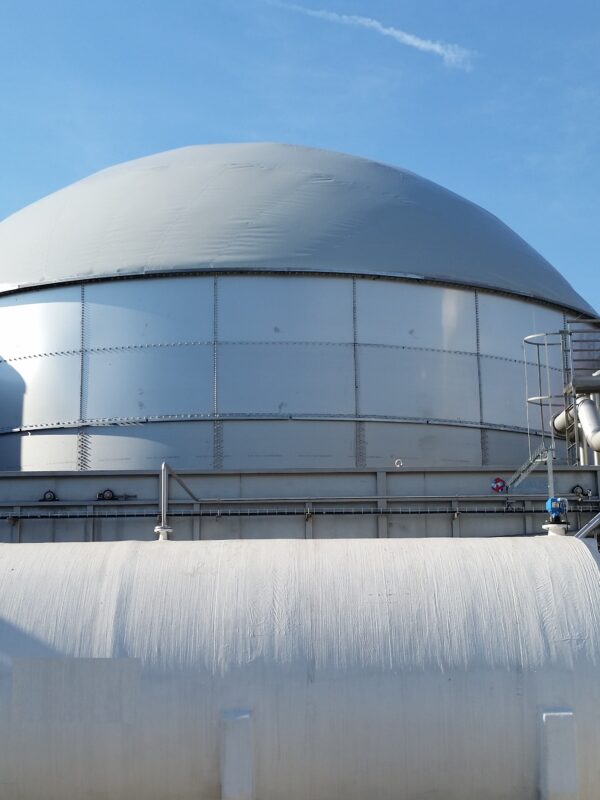Wastewater recycling for Karmeliten Brewery
Wastewater recycling for sustainable clarification and biogas production
SME compatible | The Bavarian Karmeliten Brewery in Straubing is the first German brewery to decide on a turnkey installation of a fully biological treatment plant. The carrier-based system combining anaerobic and aerobic wastewater treatment of the Dutch company Aquana completes the energy/environmental sustainability concept of a CO2-neutral brewery that has won several awards. It has been grant-aided by the German Federal Government.
The Karmeliten (Carmelites) formerly “The Order of the Brothers of the Blessed Virgin Mary of Mount Carmel”, founded the brewery in Straubing in 1367. It is thus the oldest brewery in Straubing and one of the 35 oldest enterprises in Germany. The brewery has been family-owned since 1879. Sustainable production processes, uncompromising in terms of quality, a no-nonsense attitude, and regional roots are the attributes that drive the management.
Since 2013, the company has been a pioneer in the area of sustainable energy supply, environmental compatibility, and energy self-sufficiency for the whole German brewing industry (the concept has received several awards). The aim is to reduce up to 99.6 % of the whole CO2 footprint.
Concept of energy self-sufficiency
Recycling of energy, as well as the use of wastewater, has been part of the concept of energy self-sufficiency of the brewery from the very beginning. The brewery thus installed the heat generation plants to run on “dual-fuel” in order to re-use biogas, produced in the new wastewater treatment plant of the brewery, directly for production. This concept will now be implemented using the new patented technology from Aqana (NL)-Aqwise (Israel). An order has been placed in the spring of 2019 (fig. 1). The project is fund-aided by the Environmental Innovation Program of the German Federal Ministry of the Environment. The concept involves the carrier-based anaerobic DACS® technology with a downstream aerobic treatment (AGAR® MBBR) having a very compact design and a footprint of just 12×8 m. This technology is being used for the first time in the German brewing and beverage sector. Plant elements for the periphery are installed in a container-based, so-called DACS box. The plant will be commissioned at the beginning of 2020.
Innovation for SMEs
Rising energy costs require that also SME brewery operations strike out for energy supply in a new direction. In particular, the energy potential in the wastewater could practically never be achieved for economic and safety reasons. This is applied especially to SMEs as conventional systems with so-called granular sludge reactors are extremely complex in order to operate efficiently and with a reasonable degree of safety.
When wastewater quality fluctuates, these systems are susceptible to significant drops in performance in some instances [1] and can even cease to operate. They have to be subsequently re-started with fresh biomass. Though anaerobic pre-treatment of wastewaters is state of the art in large brewery plants, conventional systems could not be implemented economically or with a reasonable degree of safety in this instance. For that reason, a decision was made to install the DACS-MBBR-Box system supplied by Aqwise-Aqana, a first in a medium-sized brewery for the reasons listed in a two-part article in BRAUWELT International No. 6, 2018 and No. 1, 2019 [1]. By making use of simple, physical basic principles and transfer of findings from other areas of wastewater treatment to anaerobic technology, it was possible to come up with an investment framework that al- lows use of these systems also in medium-sized breweries.
The primary task
In this project, the focus was on abandoning existing, in part limit-exceeding, indirect discharge of wastewater into the municipal sewer. This wastewater contains high pollution loads with in part strongly fluctuating different parameters. Instead, a pollution load of a maximum of 800 mg/l COD should be ensured that can be safely discharged. The brewery attached importance to re-use of the energy potential in the wastewater; this should be done in the most energy efficient and resource and space-saving manner possible. It would only be possible to install the plant next to the existing mixing and equalizing tank as space is strictly limited. The de- sign was based on the technical data listed in table 1.
Compact plant design
In addition to the existing mixing and equalizing tank (in which the necessary pre-acidification takes place), additional elements were installed in a space-saving design: a calamity tank for additional cushioning of incoming wastewater peaks, the anaerobic DACS reactor (with a superimposed gas buffer) with a recirculation tank (assuring optimal falling film velocity in the anaerobic reactor, optimization of pH of the wastewater before entering the anaerobic reactor, conditioning of the wastewater before it goes into the anaerobic reactor) as well as the aerobic MBBR reactor. The DACS box is installed in-between, being a compact pro- cess engineering unit, on which the emergency flare is also mounted (fig. 2). This system, has an extremely small footprint of 12×8 m, ensures the highly efficient production of 350 m3 of biogas daily. The COD conversion rate is expected to be some 95 percent as well as the very high biogas purity with a methane concentration of up to about 90 percent remains absolutely constant, despite strongly fluctuating wastewater qualities. The specific volumetric load is about 20 kg of COD/m3 daily.
Operating principle
Preacidified wastewater is supplied from the existing mixing and equalization tank into the recirculation tank and then into the DACS reactor. Wastewater flows downwards in the direction of the tank bottom via the upper distribution nozzles and through the floating carrier bed. The anaerobic biomass on the carrier converts the organic load into biogas collected under the biogas roof mounted on the anaerobic reactor. Wastewater having been treated anaerobically is discharged from the lower part of the reactor through a riser pipe. The wastewater having been treated anaerobically then goes into the MBBR/short-time oxidation vessel through an external riser pipe. Other organic compounds are removed in the MBBR. The wastewater then leaves the system. It is discharged into the municipal wastewater receiver. The turn-key, fully biological plant comprises
a) mechanical pre-clarification (screen);
b) anaerobic treatment – DACS (Downflow Anaerobic Carrier System) Technology;
c) aerobic post-treatment in the downstream aerobic step (MBBR);
d) complete process control and operating technology, as well as biogas, management, and heat exchangers.
Anaerobic treatment
The wastewater in the DACS system flows in the opposite direction to the rising biogas. The inflowing wastewater is distributed evenly over the carrier bed by rods provided with sprinkler heads installed in the gas step. CO2 is absorbed in the water fraction resulting from the contact of water and biogas. CO2 adsorption capacity rises in line with the rising water pressure of wastewater flowing downwards. As a result of CO2 adsorption in the water, methane concentration in the biogas rises. Biogas produced in the DACS system generally has a methane concentration of between 80 and 90 percent.
The carriers, with their open structure and a high inner specific volumetric surface area, act as a floating “house” for anaerobic bacteria. Based on a simple countercurrent system in the carriers, the usual sensitive and expensive 3-phase separators (settlers) are no longer necessary in this reactor type.
The system can, at the same time, adapt very flexibly to the respective tank size and configuration. Biogas is collected “under the roof”. Wastewater is discharged from the anaerobic space in the direction of aerobic post-treatment through a wastewater pipe.
Aerobic post-treatment
In the downstream aerobic step (MBBR, interior view, see fig. 3), reduced compounds, such as sulfides and remaining fatty acids, are oxidized to odor-neutral components or ingredients and converted into CO2, water and biomass. This induces final COD breakdown, breakdown of substances with an unpleasant smell, and acts as a “polishing” unit. Exhaust air from all reactors is also cleaned in this step.
Process control and operating technology
The whole process technology is installed in an insulated container and tested prior to dispatch. Control and visualization are designed on the basis of Siemens S7 1500, remote control takes place via a VPN router.
“Biogas treatment” comprises a gas buffer, a condensate sump, and a gas flare. Biogas produced goes from the DACS into the biogas buffer. The biogas buffer absorbs production peaks to assure smooth operation of the brewery’s hot water boiler and the emergency biogas flare.
Heat recovery is installed where the heat of the wastewater, after exiting the DACS, goes into the incoming wastewater before entry into the recirculation tank. Before entering the recirculation tank, the wastewater is thus heated from about 20° C to 30 °C. The brewery wastewater is heated to 38 °C in a heat exchanger against brewery hot water. The heat exchanger is also installed in the container.
Schedule
The order for the project was awarded in April 2019. The plant is scheduled to be de- livered in October/November. Towards the end of the year, the first inoculation will be started so that complete breakdown capacity will be reached in February/March 2020 at the latest. This will be followed by performance testing; the main acceptance criteria have been guaranteed. The final acceptance test will take place 6 months later, supervised by Dr. Ahrens of VLB Berlin. A comprehensive set of technical specifications has been prepared as part of the contract. Numerous further projects are in the pipeline in German and international breweries.
Summary
A new generation of a patented, fully biological wastewater treatment technology (DACS-MBBR-Box) supplied by the Dutch- Israeli joint venture Aqana-Aqwise will be installed for the first time in a German medium-sized brewery. It will round off the existing energy concept of Karmeliten Brewery in Straubing and eliminate almost 100 percent of the former CO2 footprint. The brewery will thus obtain a further 15-20 percent of overall energy requirements from biogas produced in-house by the new waste-water treatment plant.
The carrier-based reactor technologies for aerobic and anaerobic processes as well as the process concept developed by Aqana/ Aqwise can be regarded as groundbreaking, compared to conventional systems. The system “currently being installed is another proof of the fact that anaerobic wastewater treatment is technically feasible and can be operated economically, also in SME breweries.





